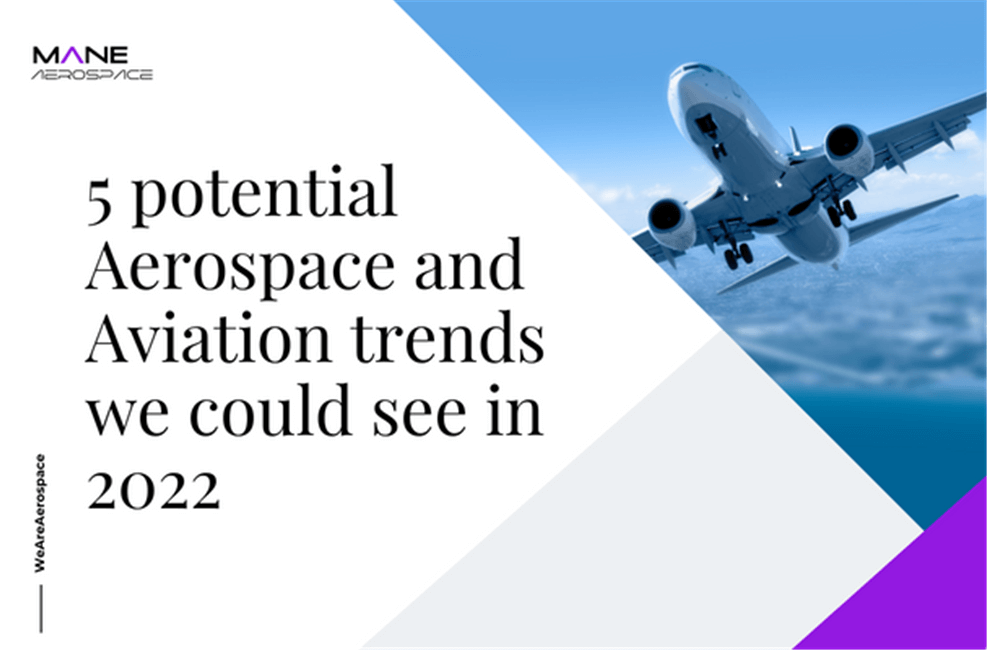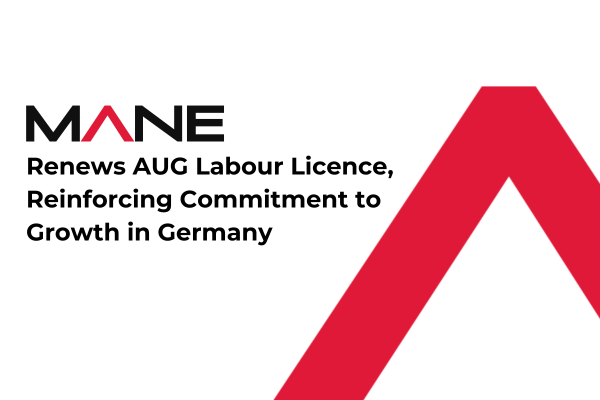5 potential Aerospace and Aviation trends we could see in 2022
06 Jan, 202210 minsThe COVID-19 pandemic has devastated the airline industry. With revenues at a mere 40% of wh...

The COVID-19 pandemic has devastated the airline industry. With revenues at a mere 40% of what they once were just a few years ago, it is projected that traffic in the sector will not return to pre-covid levels before 2024.
Yet, as we coast through the desolate days of the COVID era, it is becoming all the more clear that over the horizon is hope; aviation recruitment specialists have identified five trends that will help the industry to recover in 2022.
Commercial space travel is nearly upon us
With companies such as SpaceX and Virgin Galactic announcing the commencement of space tourism, the possibility of commercial space tourism has garnered much attention. With Research and Design stages in the coming years being imperative to its success, space tourism is expected to accumulate a market share of $2.7 billion by 2030. The feasibility of commercial space travel is currently dependent on the introduction of reusable boosters, only then will companies be able to offer an expedition to the edge of space and back by means of simply purchasing a ticket.
Pent-up demand from VFR passengers
There will no doubt be an influx of VFR (Visiting friends and family) passengers this coming year as restrictions begin to ease and variants continue to weaken. For those who have been unable to visit their beloved ones throughout the pandemic, this year is the time for reunification. Low cost airlines are to benefit from the pent-up demand of VFR passengers as they typically prefer low cost carriers to legacy airlines – which are usually more popular amongst the corporate and leisure travellers. In accordance to Global Data, VFR demand will experience a 17% compound growth rate in the next 5 years.
From passengers to cargo
Amid reports from the Airport Council International, throughout the pandemic, there was only a reduction of 8.9% of cargo volume in 2020 compared to the pre-covid era. Perhaps, due to the e-commerce boom during lockdown, alongside the transportation of vaccines, the air cargo sector proved a financial lifeline for many nations. It is believed that demand this year will surpass 2019 levels – 69.3 million metric tonnes.
Pilots and aviation professionals
With the industry experiencing a 64.6% reduction in passenger traffic throughout the pandemic, airliners were forced to remain grounded for the majority of the year. Resultantly, pilots, among other aviation professionals, were laid off from their jobs. However, with expected demand for air travel to increase sharply in 2022, a shortage of pilots, cabin crew, and other staff is to be anticipated. The Oliver Wyman analysis predicts that for 2022, pilot demand will surpass the current number of those employed. Whilst the demand continues to grow throughout the decade, a shortage of 60,000 pilots across the globe is expected. Thus, this year is paramount for training those interested in becoming pilots, and on average, it takes 24 months of training before a pilot is absorbed into the industry. The industry must act now if it is to minimise the vacuum in between the lack of pilots, and the training of its future staff.
Technological advances in the industry
Perhaps this is to be the single most important trend expected to push the industry to greater heights in 2022; as technology improves, the more reliable and seamless the experience of air travel becomes.
2022 is perhaps the time we see blockchain technology become of use in airports across the globe. With enhanced reconciliation and ease of data sharing, blockchain technology could be a fit for aviation applications within the airport. Specifically, as we continue to live in a covid-influenced world, blockchain technology could provide a useful tool for sharing all the health-related information of travellers within organisations.
Recently, Dubai Airport – where 90 million passengers pass through every year – introduced smart gates with passport-free operations. Utilising biometric technology, passengers can choose to check in through smart gates, eliminating the need to check documents, thus creating a more seamless method of boarding. Such technology is particularly useful for airports operating at capacity constraints and simply lack the staff to deal with high numbers of passengers. Therefore, it can be expected that the busiest airports across the world are to adopt biometric technology in 2022.
In summary, this year is to be one of the most dynamic years in the aviation and airline industry. If the five trends mentioned are to come to the forefront in the coming twelve months, then the sector could find itself in a better position than it was pre-covid.



